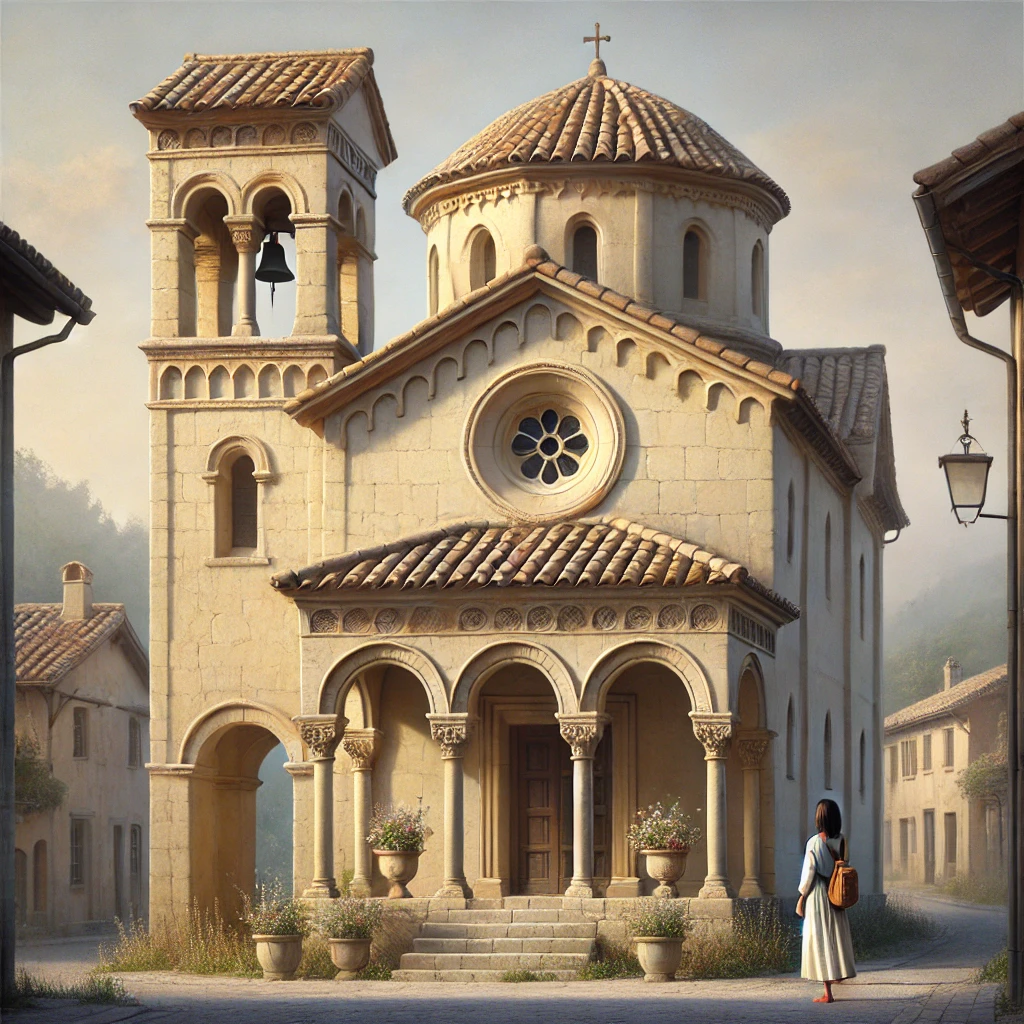ChatGPT:
Volterra is a hilltop town in Tuscany, Italy, renowned for its rich history, stunning medieval architecture, and alabaster craftsmanship. Situated about 50 kilometers southwest of Florence, Volterra has roots that stretch back thousands of years, making it a captivating destination for history enthusiasts.
Origins and Ancient History
• Etruscan Era (8th–3rd Century BCE):
Volterra, originally known as Velathri, was one of the principal cities of the Etruscan League of Twelve, a federation of powerful city-states. The Etruscans fortified the city with massive stone walls, some of which still stand today, and made it a center of trade and culture. The city’s acropolis, located on the highest point, housed temples and was the heart of its spiritual and administrative life.
• Roman Era (3rd Century BCE–5th Century CE):
After falling under Roman control around 260 BCE, Volterra became Volaterrae and thrived as a municipium (self-governing city). The Romans expanded its infrastructure, adding features such as baths, an amphitheater, and an aqueduct. The remains of these structures are still visible, including the well-preserved Roman theater from the 1st century BCE.
Medieval and Renaissance Development
• Early Middle Ages:
Following the fall of the Roman Empire, Volterra entered a period of decline. It became a bishopric in the 5th century, marking its importance as a religious center. The Cathedral of Santa Maria Assunta, first constructed in the 12th century, reflects this ecclesiastical prominence.
• High and Late Middle Ages:
Volterra regained some of its former influence during the 12th and 13th centuries as a free commune, but it faced constant power struggles with neighboring Florence. The city’s medieval character blossomed during this time, with the construction of towers, palaces, and fortifications. The Palazzo dei Priori, built in 1208, is one of the oldest town halls in Tuscany and a testament to this period.
• Renaissance Period:
In 1472, Volterra was conquered by Florence, and it became part of the Medici domain. The Medici reinforced its fortifications, including the imposing Fortezza Medicea, which now serves as a prison. The Renaissance brought cultural and artistic development, though the city’s political independence was lost.
Modern Era and Preservation
Volterra’s economy shifted toward artisanal industries, particularly alabaster carving, which became world-famous. By the 19th and 20th centuries, the city embraced tourism, showcasing its ancient, medieval, and Renaissance heritage.
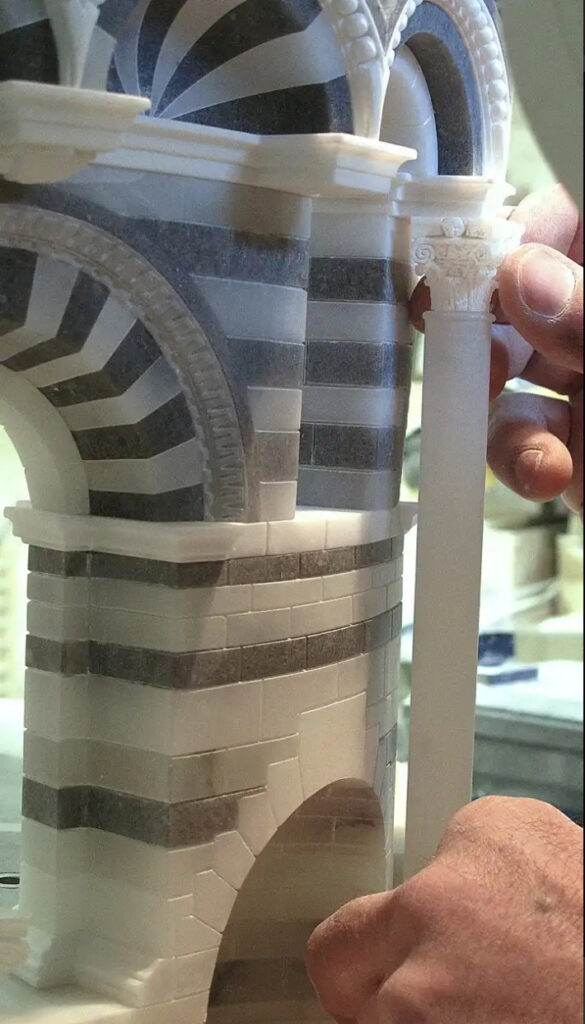
Today, Volterra is a thriving cultural and historical center, attracting visitors with:
• Etruscan and Roman ruins: The Etruscan Arch (Porta all’Arco) and the Etruscan Museum (Guarnacci Museum) house artifacts from the city’s early history.
• Medieval architecture: Narrow cobbled streets, fortified walls, and Gothic-Romanesque buildings.
• Cultural significance: The city is frequently featured in literature and media, such as the “Twilight” series, which boosted its international profile.
Volterra’s enduring charm lies in its ability to seamlessly blend its ancient past with the vibrancy of modern life, making it a must-visit for anyone exploring Tuscany.
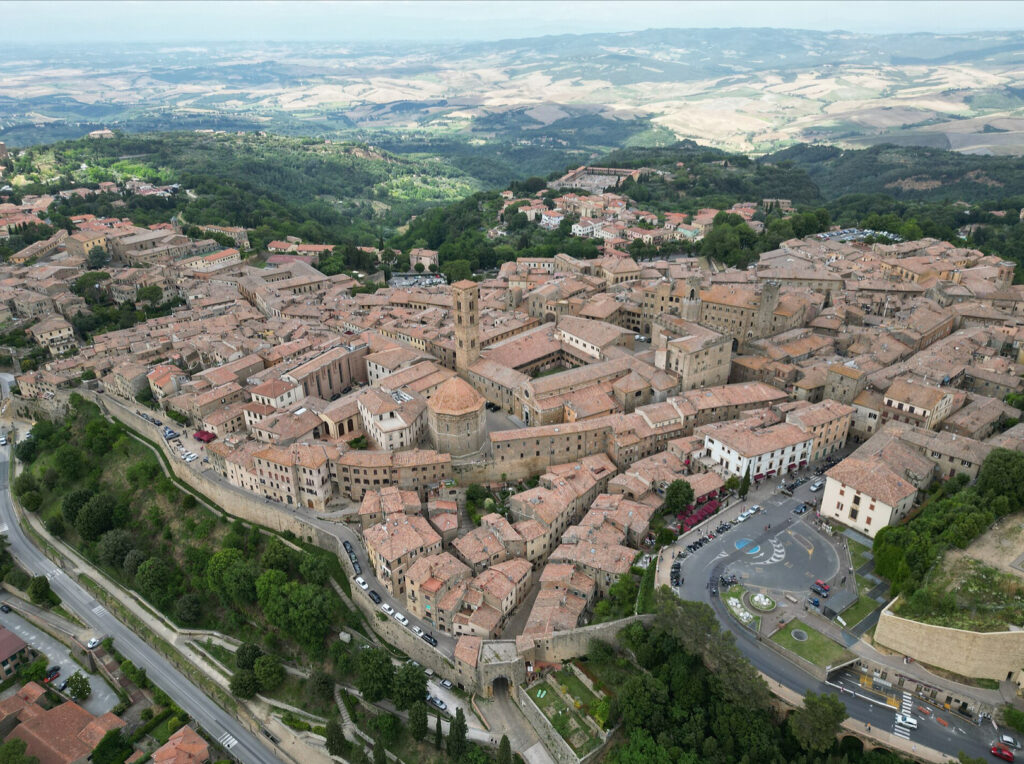
Here is a list of historical monuments and tourist attractions in Volterra, Italy, that highlight its rich Etruscan, Roman, medieval, and Renaissance heritage:
Etruscan Monuments
1. Porta all’Arco (Etruscan Gate):
A well-preserved Etruscan city gate from the 4th–3rd century BCE, featuring large stone blocks and weathered carvings of heads.
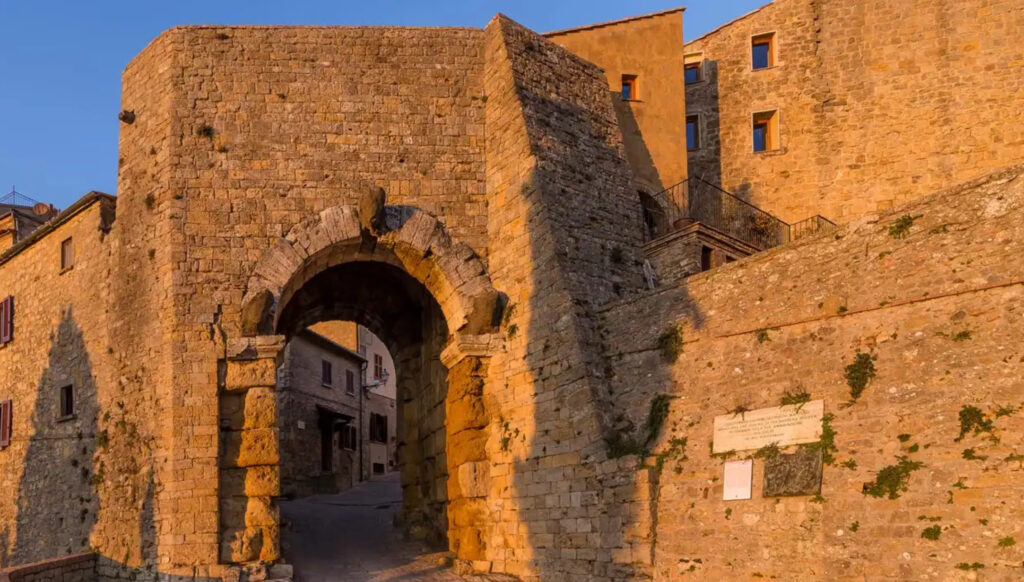
2. Etruscan Walls:
Sections of the massive defensive walls from the 4th century BCE that once enclosed the city.
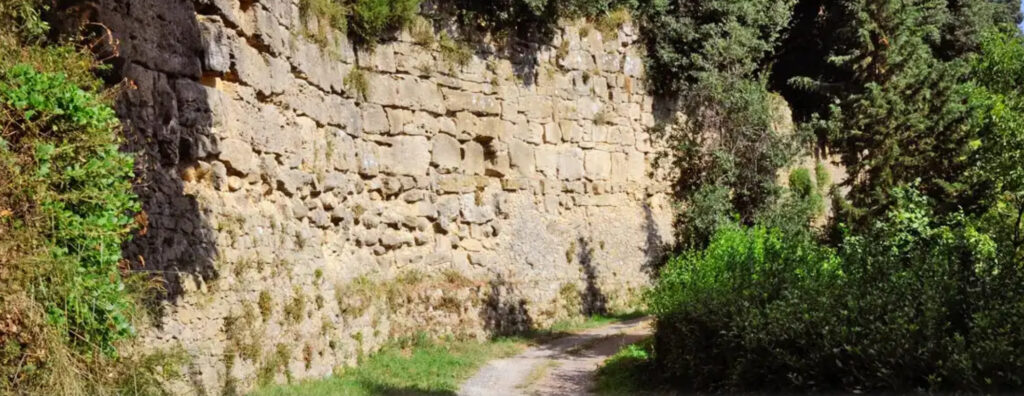
3. Etruscan Acropolis:
Located in Parco Archeologico Enrico Fiumi, this site contains ruins of ancient Etruscan temples, offering a glimpse into the city’s religious life.
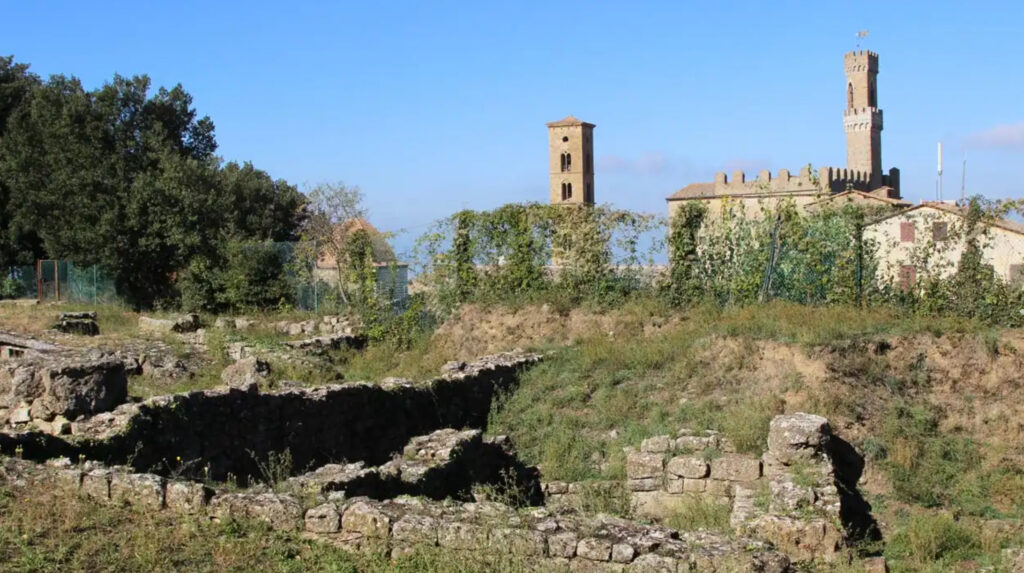
4. Guarnacci Etruscan Museum (Museo Etrusco Guarnacci):
One of Italy’s oldest archaeological museums, housing a vast collection of Etruscan artifacts, including funerary urns and the iconic “Shadow of the Evening” (Ombra della Sera) bronze statue.
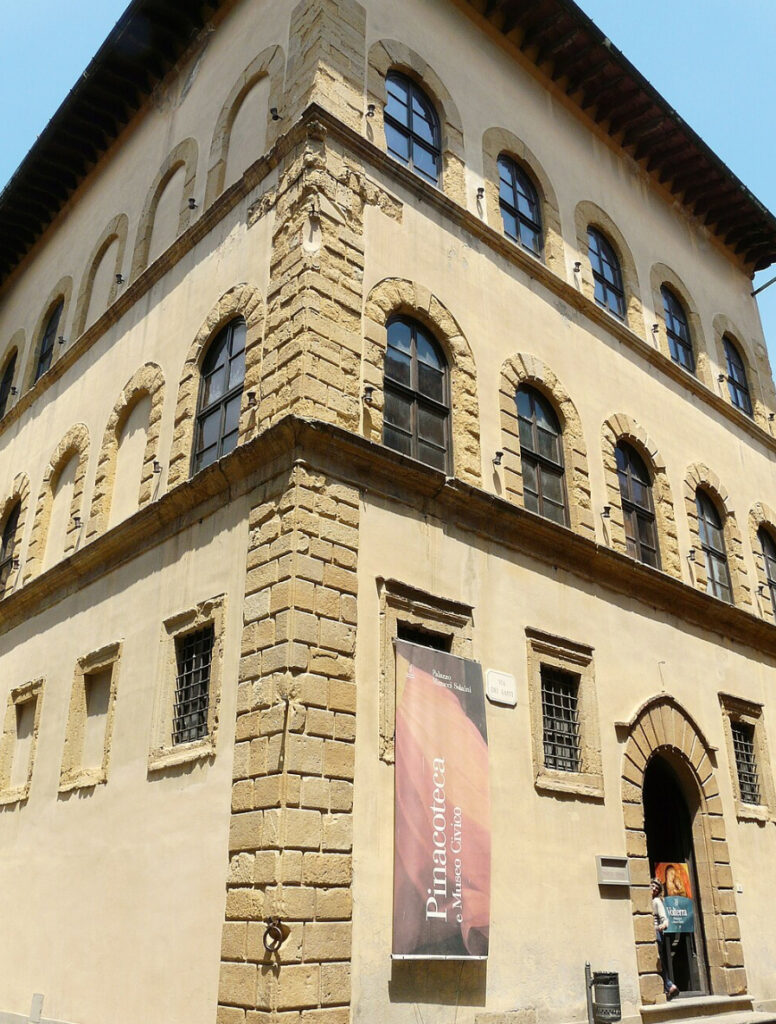
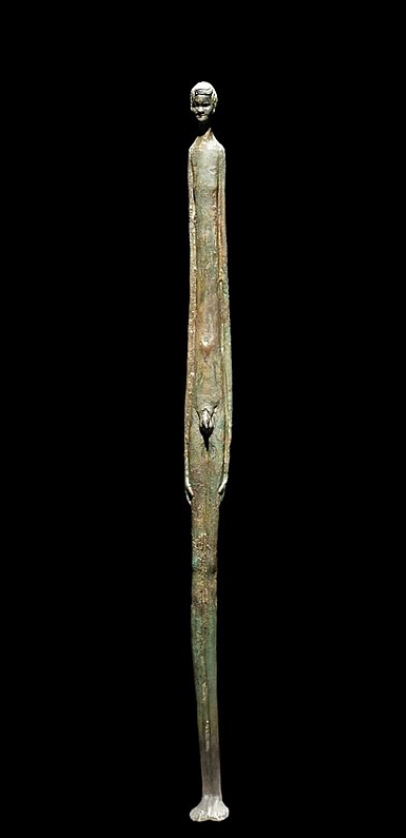
Roman Monuments
5. Roman Theater:
Built in the 1st century BCE, this well-preserved theater features stone seating, a stage, and remains of thermal baths.
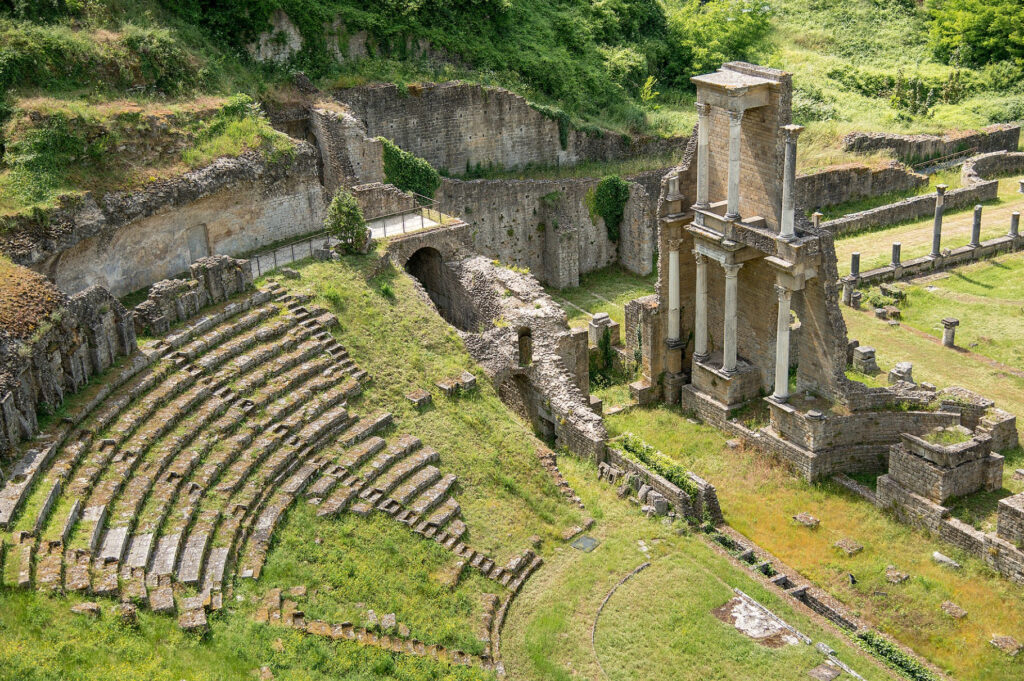
6. Roman Forum:
Remnants of the ancient marketplace and social center of Roman Volterra, near the theater.
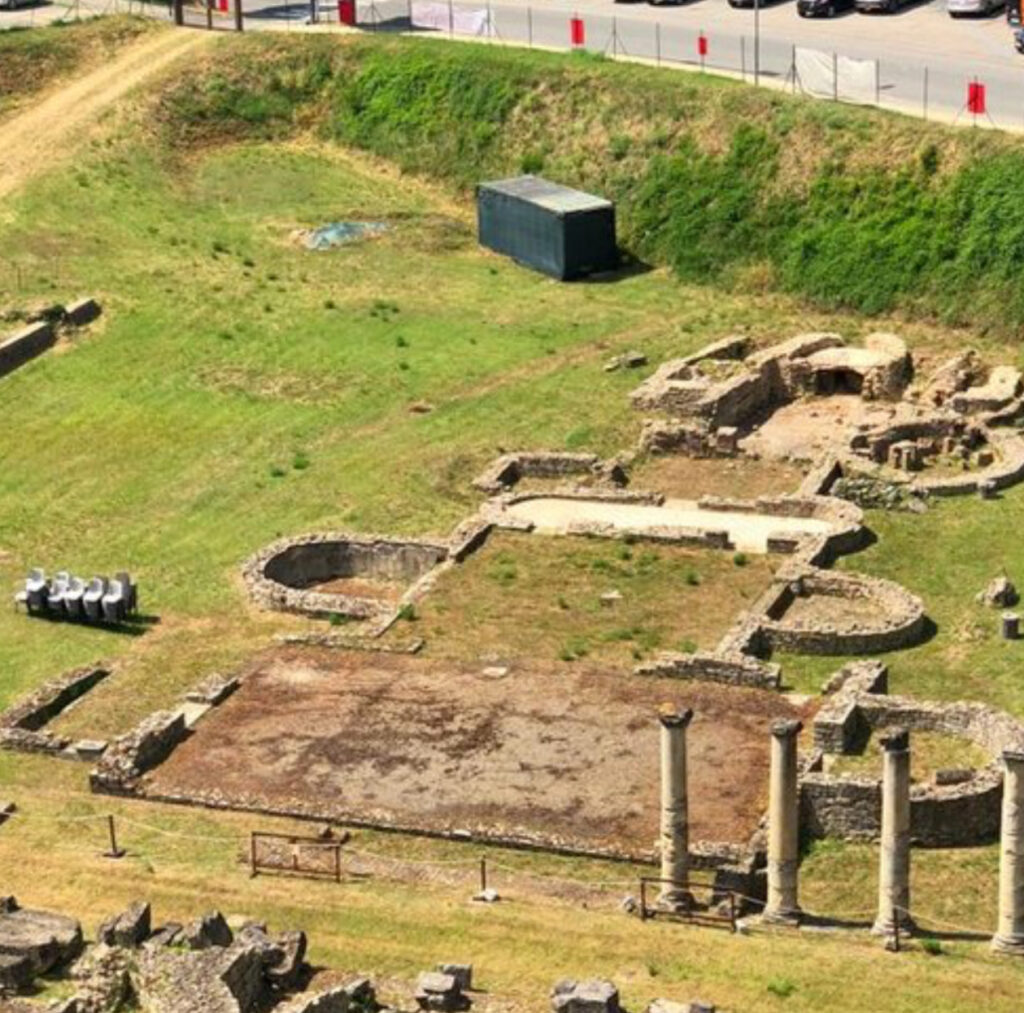
Medieval and Renaissance Landmarks
7. Palazzo dei Priori:
Constructed in 1208, this is the oldest town hall in Tuscany. Its tower and intricate facade are symbols of Volterra’s medieval power.
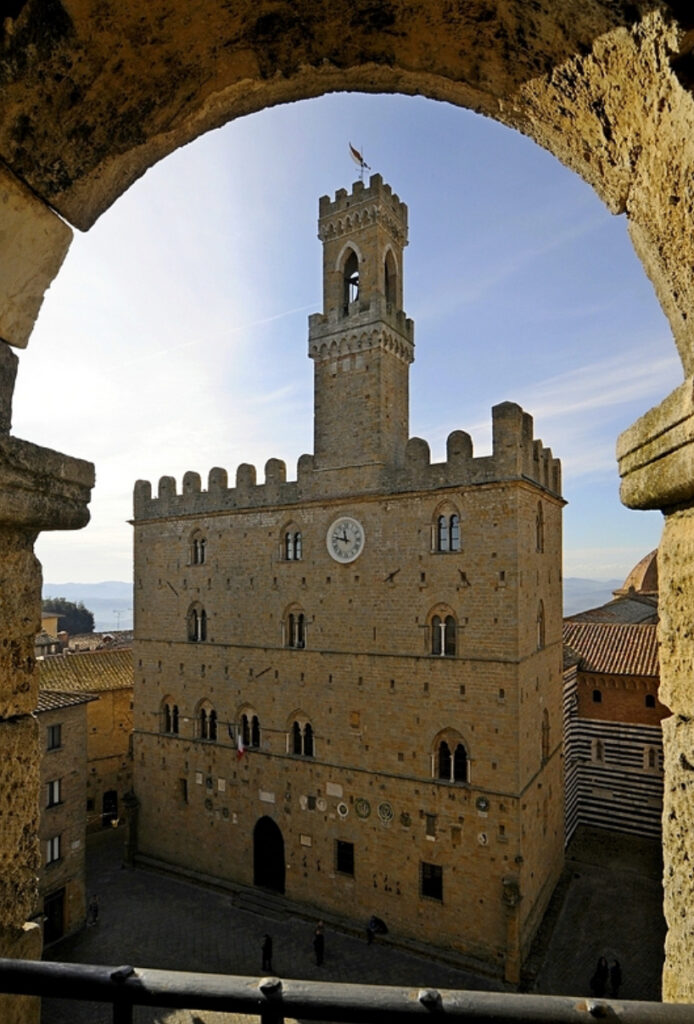
8. Volterra Cathedral (Duomo di Santa Maria Assunta):
A Romanesque church rebuilt in the 12th century with later Renaissance additions. Inside are frescoes, a marble ciborium, and an impressive coffered ceiling.
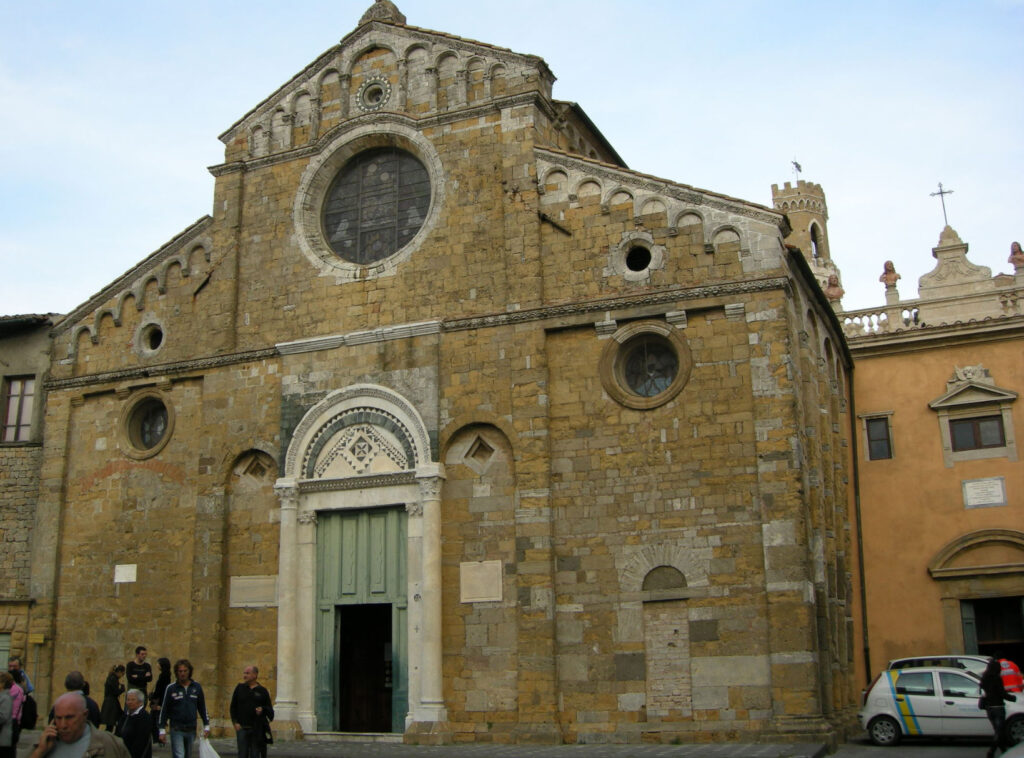
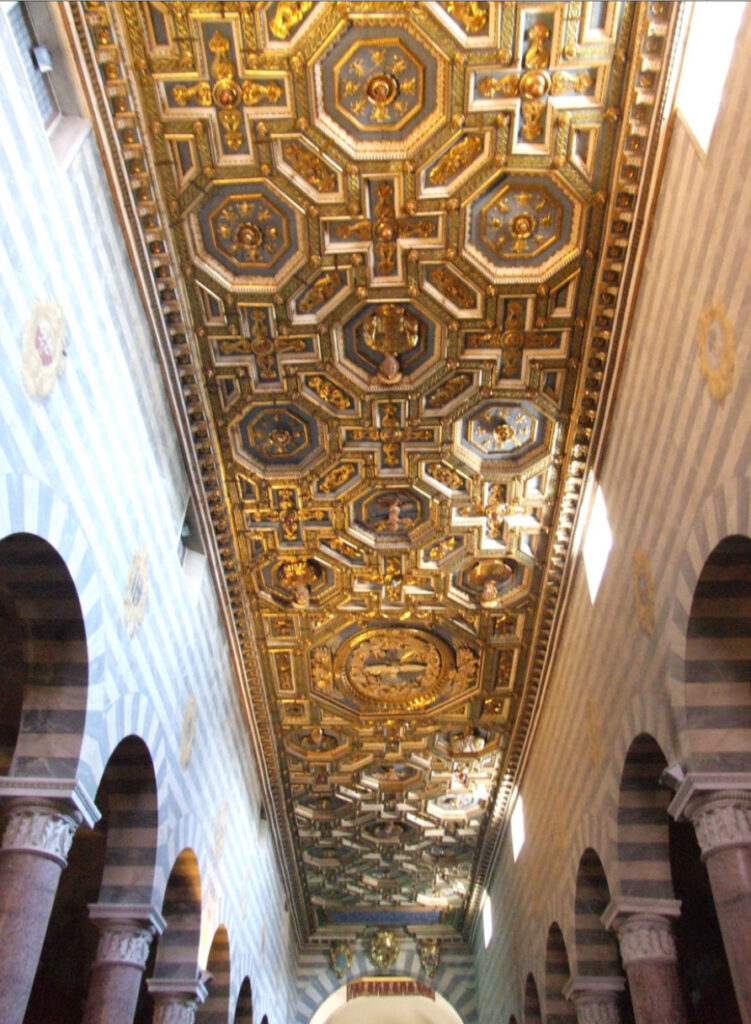
9. Baptistery of San Giovanni:
A striking octagonal structure from the 13th century, located opposite the cathedral. Its Romanesque facade is adorned with green and white marble.
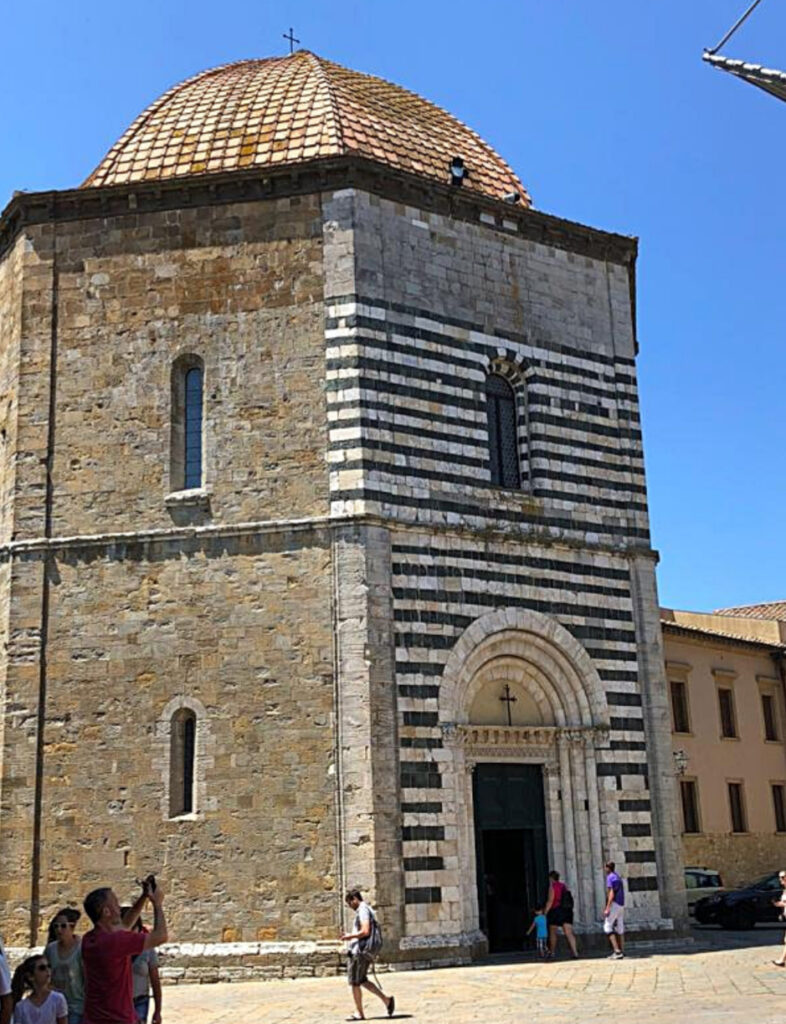
10. Fortezza Medicea (Medici Fortress):
A 15th-century fortress built by Lorenzo de’ Medici to assert Florentine control. Although now a prison, it remains an imposing feature of the city’s skyline.
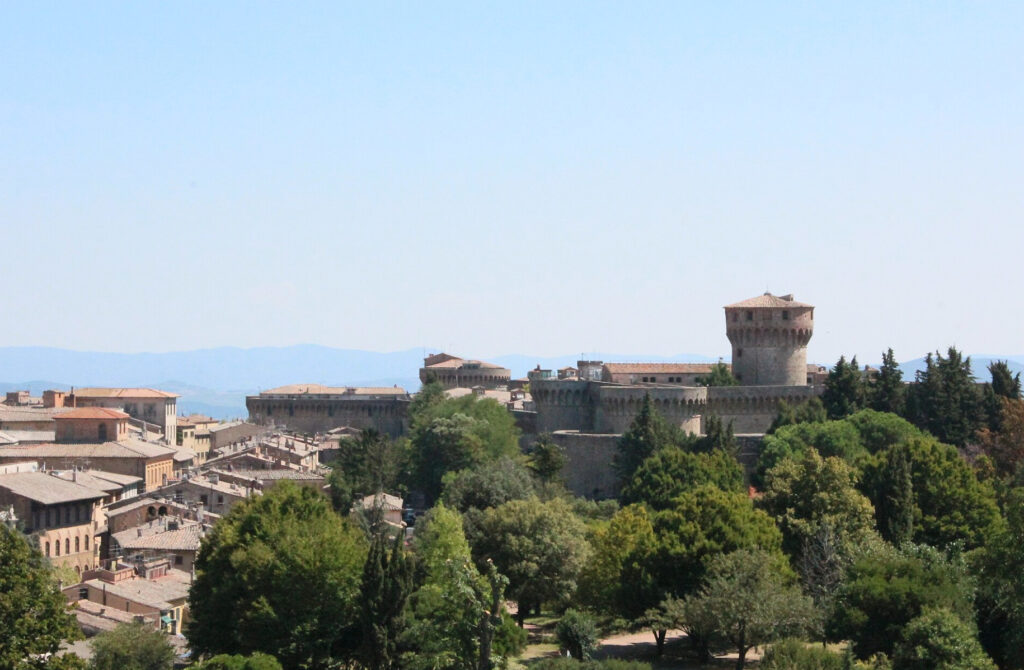
11. Palazzo Pretorio and Torre del Porcellino:
A medieval palace with the iconic “Piglet Tower,” so named for the stone pig sculpture atop it.
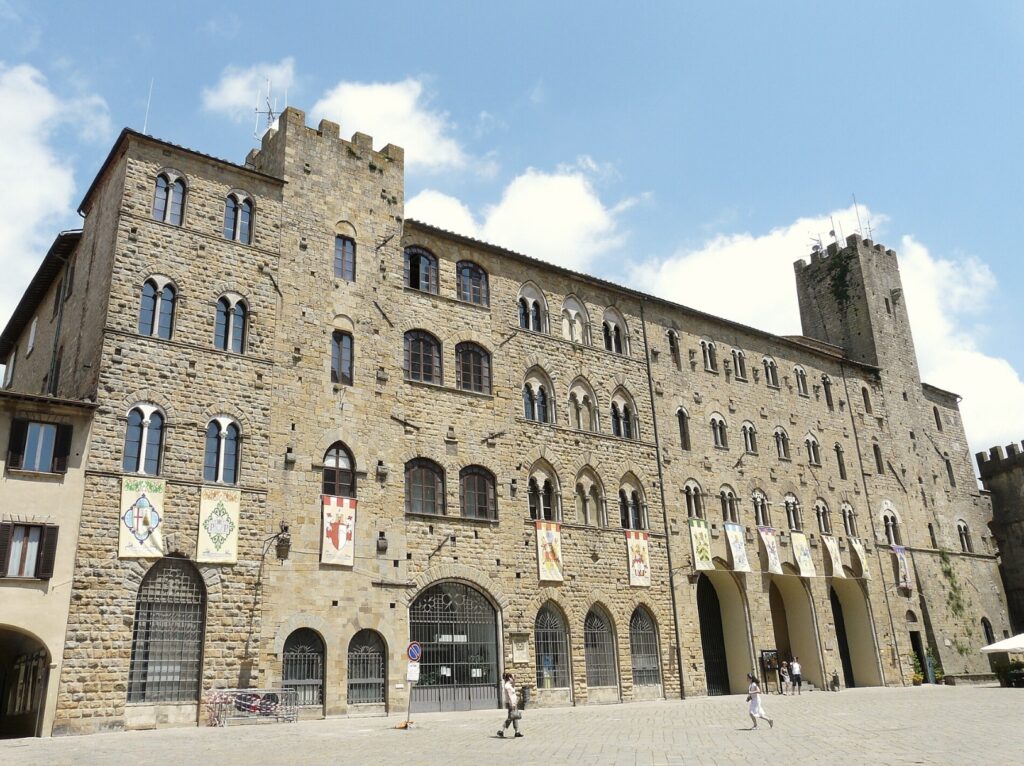
Museums
12. Alabaster Ecomuseum:
Dedicated to Volterra’s alabaster craftsmanship, showcasing the history and artistry of this local tradition.
13. Art Gallery and Civic Museum (Pinacoteca e Museo Civico):
Housed in the Palazzo Minucci-Solaini, it features works by notable artists, including Rosso Fiorentino’s masterpiece “The Deposition” (1521).
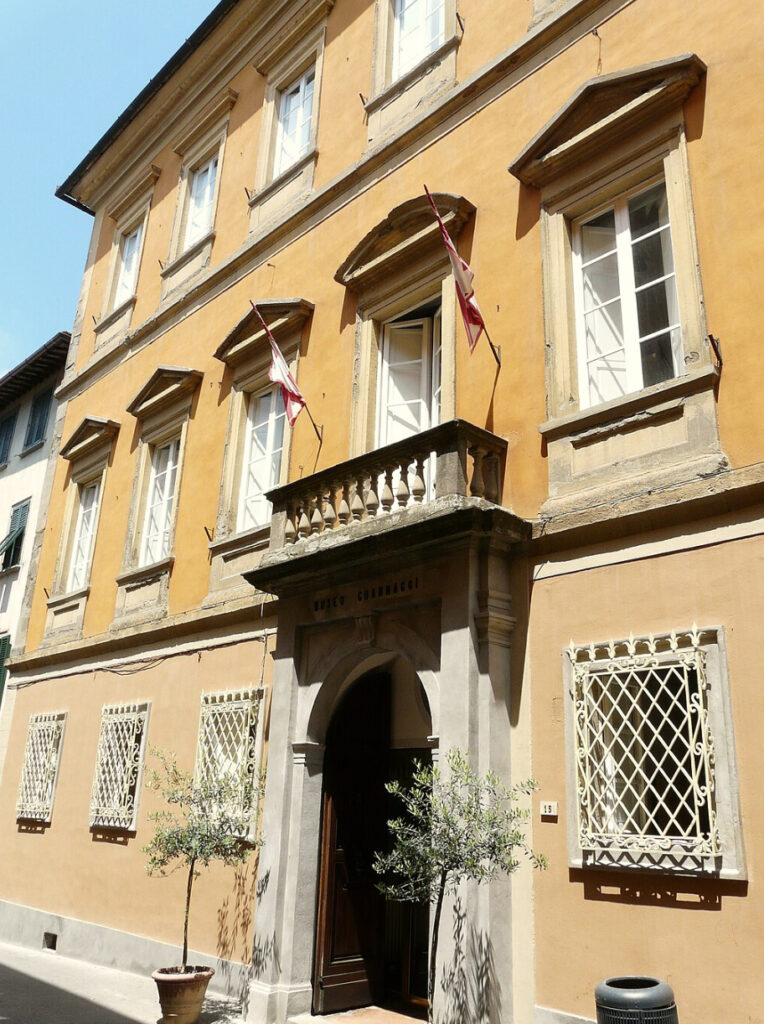
Natural and Panoramic Spots
14. Balze Cliffs (Le Balze):
A natural erosion site on the edge of the city, offering stunning views of the Tuscan countryside and the ruins of a medieval monastery.
15. Parco Archeologico Enrico Fiumi:
A peaceful archaeological park on the city’s acropolis, perfect for exploring ruins and enjoying scenic vistas.
Other Highlights
16. Via Porta all’Arco:
A picturesque street filled with shops selling alabaster goods and other local crafts.
Volterra offers a mix of history, art, and breathtaking views, making it an unforgettable destination in Tuscany.
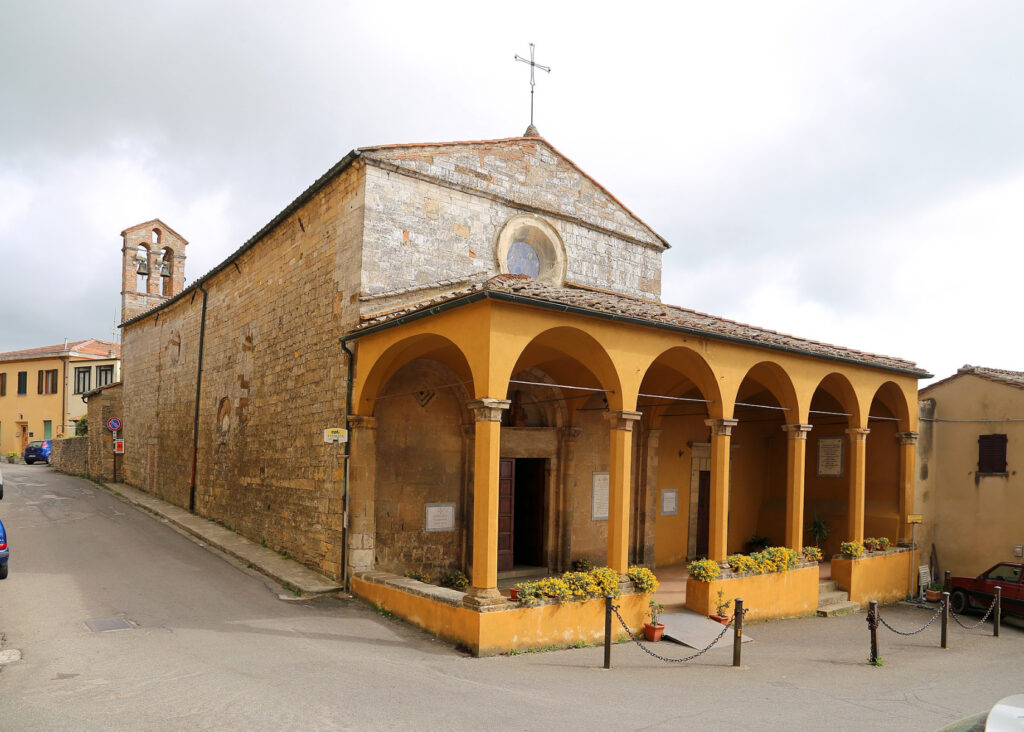
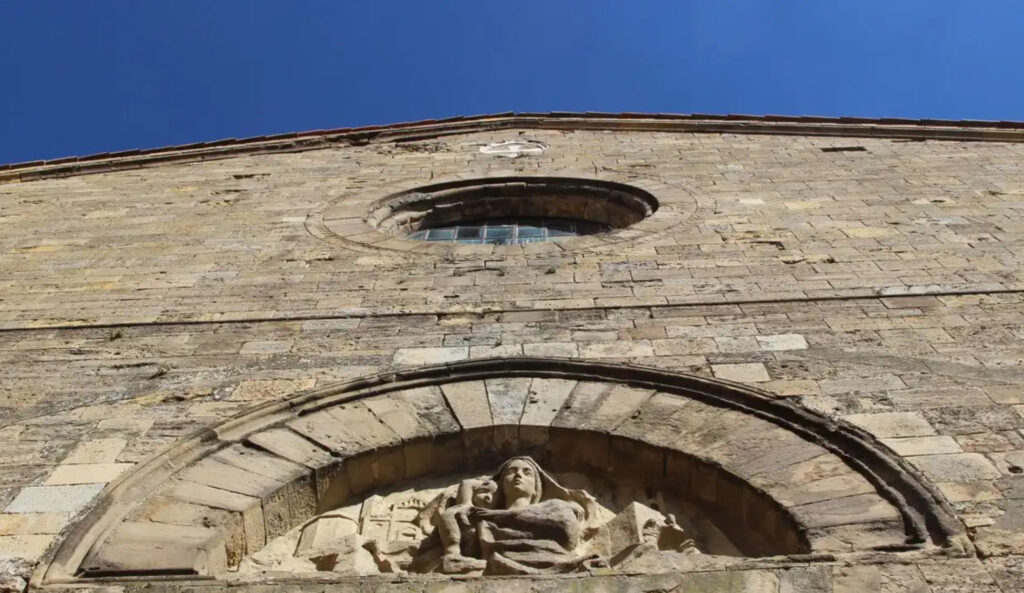
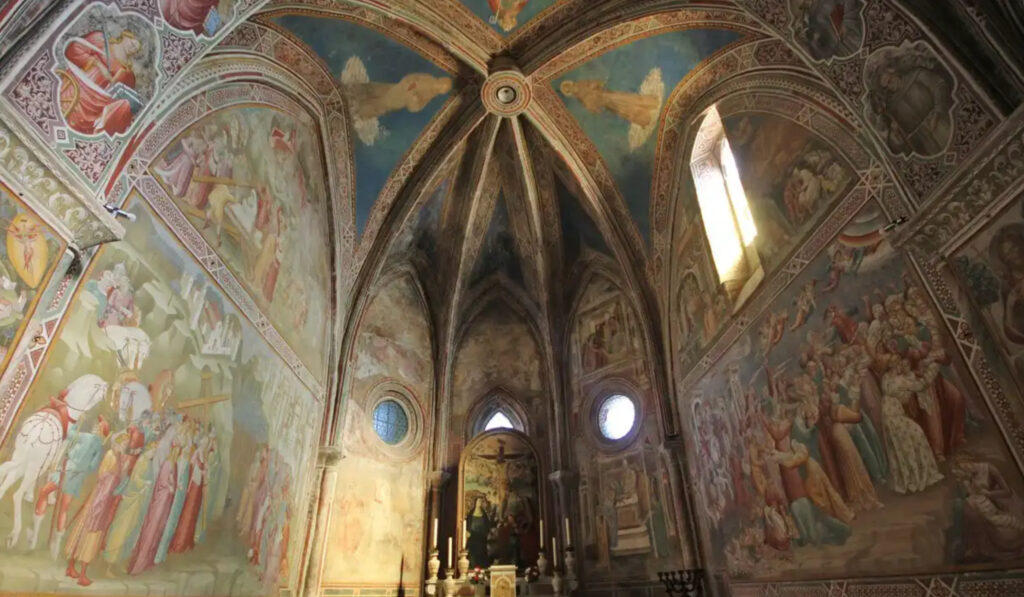
One-Day Itinerary for Volterra
This itinerary combines Volterra’s historical highlights with opportunities to savor local Tuscan cuisine, including its famous alabaster crafts and traditional food specialties like pici pasta, wild boar, and pecorino cheese.
Morning
1. 8:30 AM – Start at Piazza dei Priori
Begin your day in the heart of Volterra at this medieval square. Admire the Palazzo dei Priori, Tuscany’s oldest town hall, and climb its tower for panoramic views of the city and countryside.
2. 9:30 AM – Visit the Etruscan Museum (Guarnacci Museum)
Dive into Volterra’s ancient Etruscan history at this fascinating museum. Don’t miss the iconic bronze sculpture “Shadow of the Evening” and the intricate funerary urns.
3. 11:00 AM – Explore the Roman Theater
Walk to the Roman Theater, one of Volterra’s most well-preserved ancient sites. Stroll through the ruins and imagine life in the 1st century BCE.
4. 12:30 PM – Lunch at a Local Trattoria
Enjoy a leisurely Tuscan lunch at Osteria La Pace or Ristorante Enoteca Del Duca. Suggested dishes:
• Pici pasta (thick hand-rolled pasta) with wild boar sauce or truffle.
• Cinghiale in umido (wild boar stew).
• Pair your meal with a glass of local Chianti wine.
Afternoon
5. 2:00 PM – Visit the Volterra Cathedral (Duomo di Santa Maria Assunta)
Head to the Romanesque cathedral to admire its frescoes, coffered ceiling, and artistic details. Don’t miss the nearby Baptistery of San Giovanni, with its striking green and white marble facade.
6. 3:00 PM – Stroll Through Parco Archeologico Enrico Fiumi
Take a relaxing walk in this archaeological park, where you’ll find remnants of Etruscan and medieval structures. It’s a great spot to soak in the views and atmosphere.
7. 3:30 PM – Alabaster Shopping
Wander down Via Porta all’Arco, where you can browse workshops and boutiques selling Volterra’s famous alabaster crafts. These handcrafted pieces make for unique souvenirs.
8. 4:00 PM – Coffee Break at L’Incontro Caffè
Recharge with a cappuccino or espresso and try a slice of castagnaccio, a traditional chestnut flour cake.
Evening
9. 5:00 PM – Sunset at Le Balze Cliffs
Take a short drive or walk to Le Balze, dramatic cliffs offering breathtaking views of the Tuscan landscape. It’s a serene way to end your day.
10. 7:30 PM – Dinner at Ristorante Ombra della Sera
Indulge in a final Tuscan feast. Suggested dishes:
• Bistecca alla Fiorentina (Florentine steak, for meat lovers).
• Pecorino cheese platter with honey and jam.
• Local desserts like torta di ceci (chickpea cake) or cantucci with vin santo.
This itinerary provides a balanced mix of history, culture, and gastronomy, allowing you to experience the best of Volterra in one memorable day.
